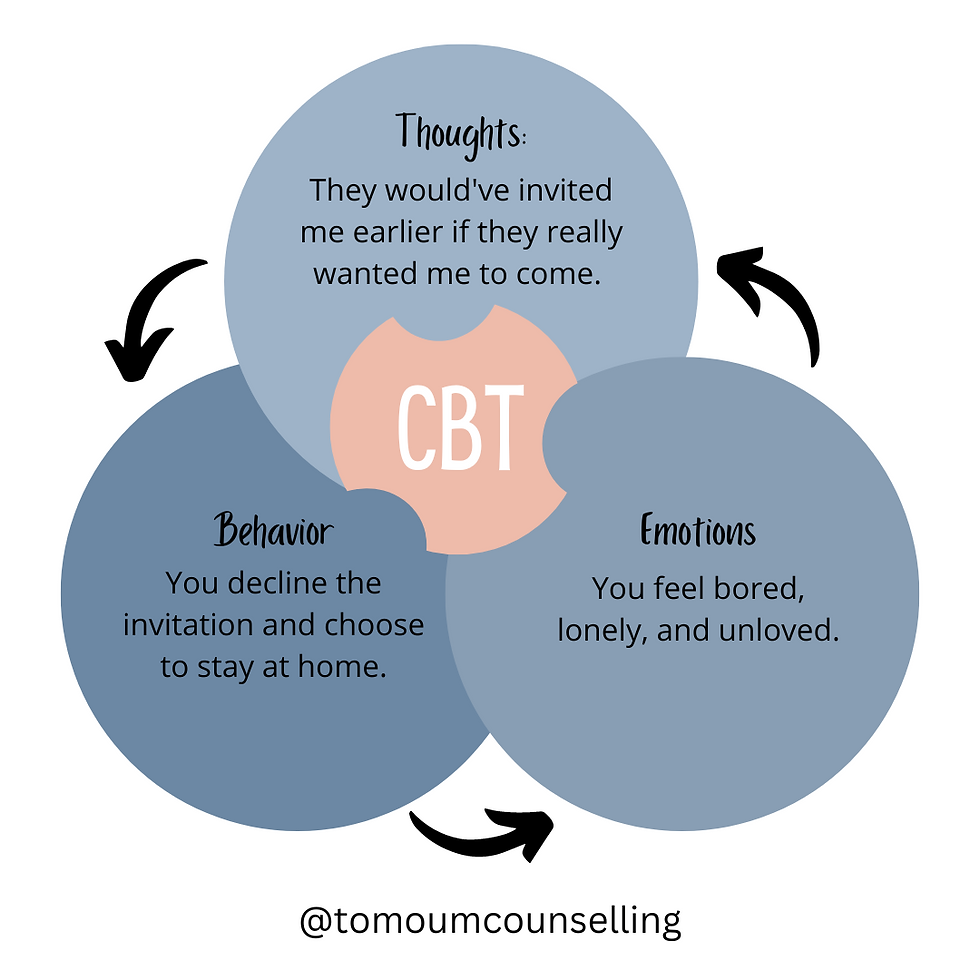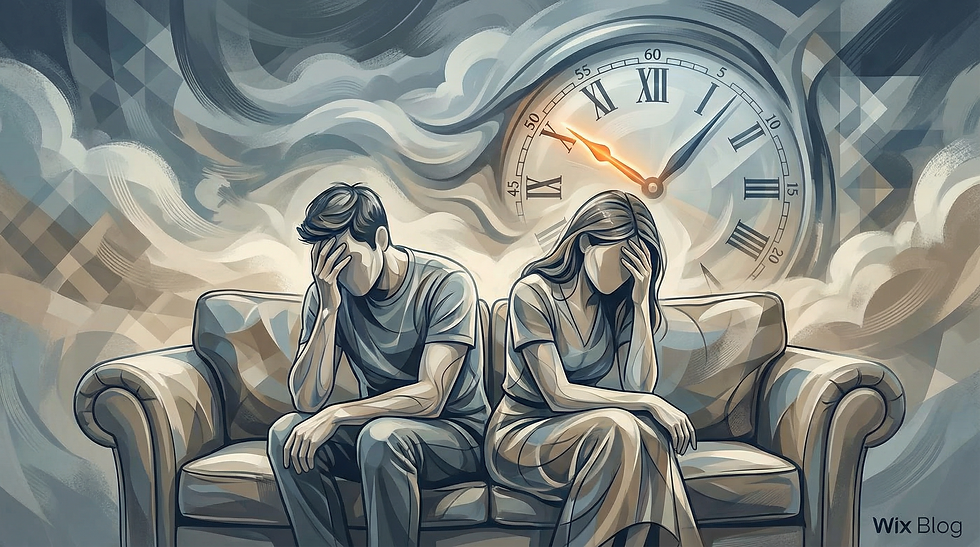Understanding Cognitive-Behavioral Therapy (CBT)
- Rawda Tomoum
- Jan 9, 2023
- 2 min read
Updated: Apr 9, 2023
I want you to take a moment and notice how you generally talk to yourself, and I want you to wonder how similar or different it is from how you talk to other people. Have you noticed that often times, you can be pretty harsh – or even mean – to yourself? Does it seem like there’s a negative attitude dominating your thoughts and emotions? Maybe it’s time to explore what cognitive-behavioral therapy (CBT) can do for you.
What is Cognitive Behavioral Therapy?
Cognitive behavioral therapy (CBT) focuses on the relationship between our thoughts, emotions, and behaviors. It is based on the idea that these three elements can affect each other, which in turn can play a powerful role in determining how we feel and act. Meaning, that our thoughts can affect how we feel and what we do. Our behaviors can affect our mood and our thinking. And even our emotions can affect our thoughts and behaviors. While CBT places emphasis on our thinking patterns and how they affect how we feel and act, it’s important to understand that our behavior is equally important in affecting our mood and thoughts. It doesn’t go in one direction. They’re intertwined and the impact can go in either direction.
We call this concept the Cognitive Triangle.

Let me give you an example ..
Situation: Your friend invites you to an outing a group is having tonight.

So, Why is CBT Helpful?
CBT is a solution-focused approach that can help you break free from negative patterns and improve your quality of life. Through CBT, you learn how to notice your thoughts. You also learn about negative thinking patterns (aka cognitive distortions) that you may be engaging in. Your therapist then shares strategies and tools you can use to evaluate and challenge these negative thoughts and consequently help you feel better.
We call this process, the ABCDE model. It's basically how we reconstruct our thinking.

CBT teaches you practical tools and skills you utilize outside of the therapy room and can stay with you for life. Because it relies on changing your overall approach and how you deal with ordeals or negative situations, its impact last years after you discontinue therapy and minimizes the risk of relapse. Keeping the basic concept of the cognitive triangle in mind when making day-to-day choices alone can lead to improved emotions and behaviors, which can ultimately lead to a better quality of life.
Remember, it's okay to have negative thoughts from time to time. It's a natural part of being human. The key is to learn how to manage those thoughts and not let them control you. It's also important to remember that changing thoughts and beliefs is not always easy and may take time and effort. However, with practice and persistence, it is possible to learn new ways of thinking that can lead to lasting positive change.
-----
Follow me on Instagram and Facebook for more mental health awareness. Need to talk to someone? Reach out to rawda@tomoumcounselling.com or call/sms 604-800-5154.




Comments